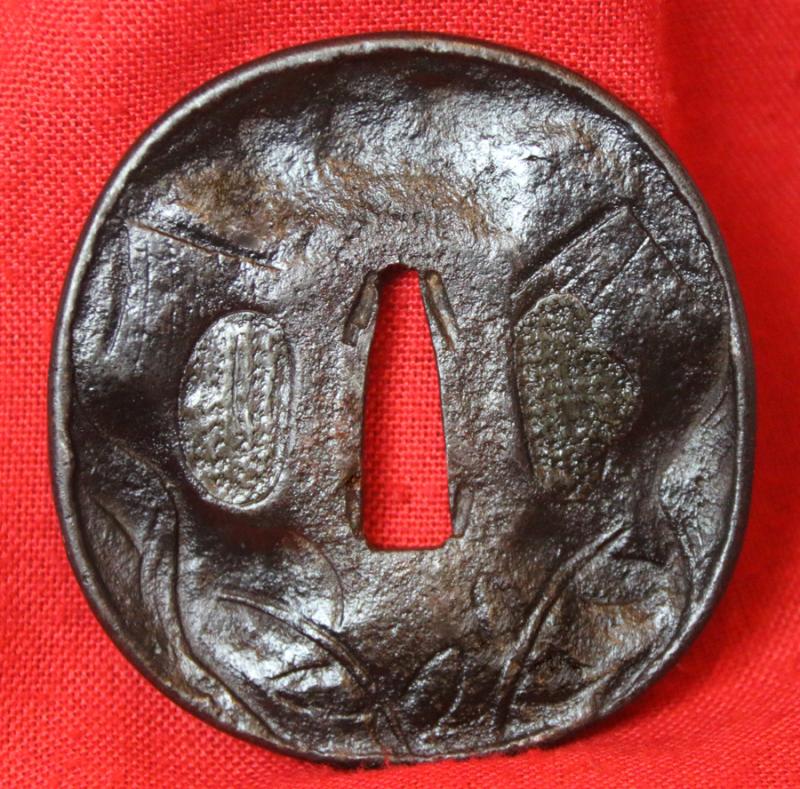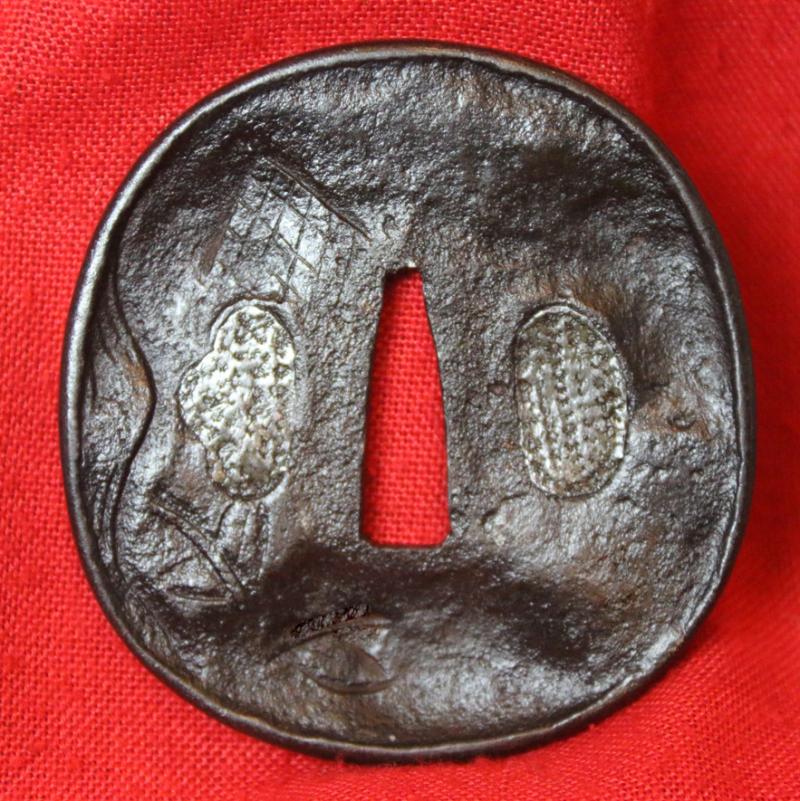An Edo Period 1603 -1867, Katana Tsuba Tenbo Saotome Style, Hammered Iron With Formed Rim Mimi
A most attractive form of tsuba with fabulous patina, the hitsu-ana infills are extremely well done, and very nicely surface decorated. The hammering of the surface is superb and to us this is an exceptional piece for a collection or to compliment a suitable blade. Likely early Shinto, 1600’s. With pierced kozuka and kogai hitsu-ana both metal filled, possibly in a silver alloy. The tsuba, is a fundamental element in the mounting of the Japanese sword, it is the guard, the most important element of the fittings, and has two main functions: the first to protect the hand against the slashes and lunges of an opposing sword; the second is to prevent that the hand ends up directly on the cutting edge of the blade. Over the course of more than ten centuries of history, the tsuba has undergone a number of important changes, as regards the materials used for its manufacture and its appearance.
During the centuries of wars that characterised Japan until the advent of the Tokugawa Shogunate during the first half of the 17th century, the tsuba was essentially made of iron or steel. From the mid-17th century onwards the tsuba became a real work of art, with the use of soft metals used in various ways, with engravings, incrustations; well made tsuba were the pride of hundreds of craftsmen’s schools whose value sometimes exceeded that of the same blades of the mounting where tsuba was part of
75mm
Code: 24233
445.00 GBP


